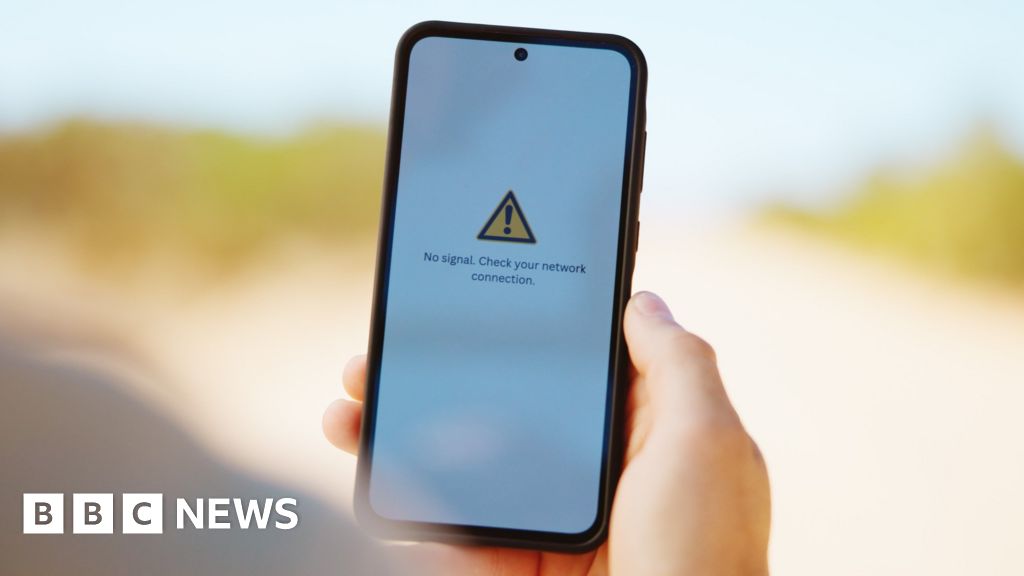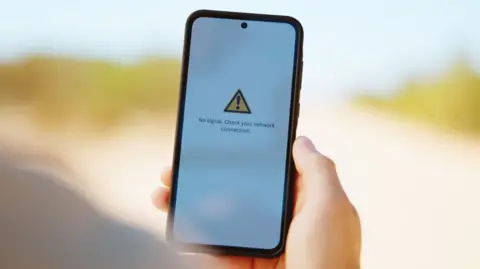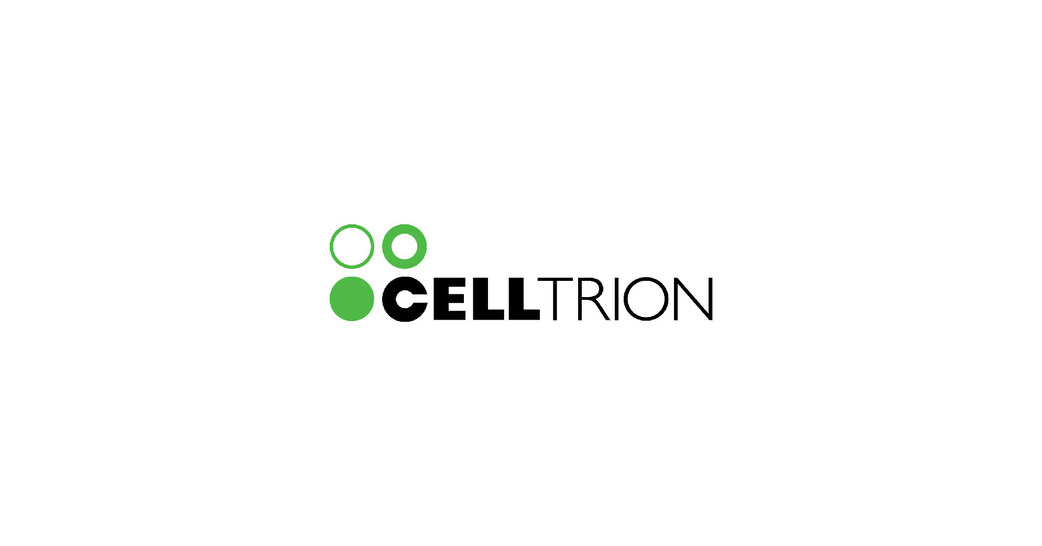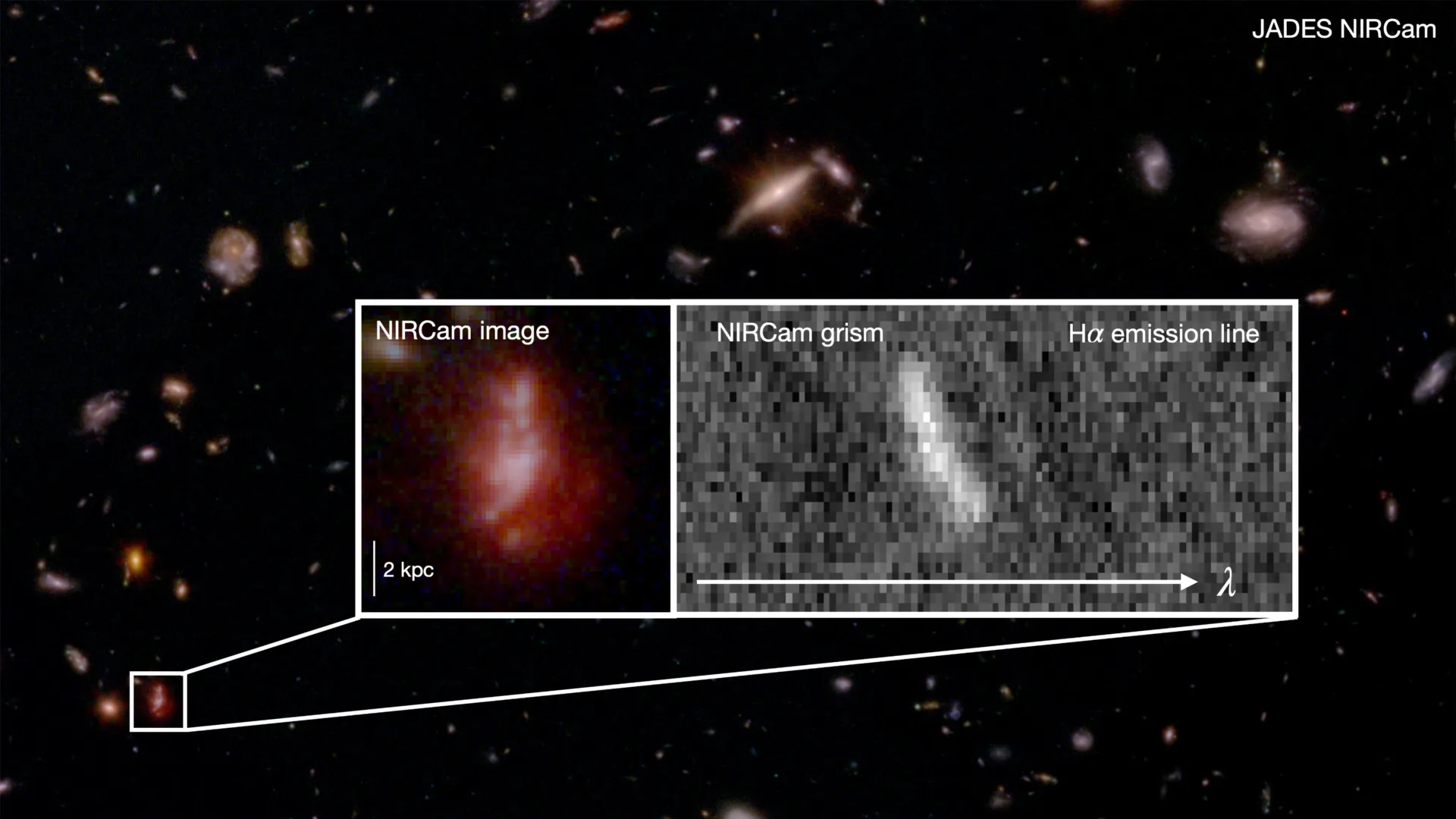BACKGROUND AND AIMS
Cutaneous leiomyosarcoma is a rare smooth muscle neoplasm that can be classified as dermal or subcutaneous depending on the depth of origin. Dermal leiomyosarcoma (dLMS) is generally considered an intermediate-risk neoplasm…

Cutaneous leiomyosarcoma is a rare smooth muscle neoplasm that can be classified as dermal or subcutaneous depending on the depth of origin. Dermal leiomyosarcoma (dLMS) is generally considered an intermediate-risk neoplasm…

Zoe KleinmanTechnology editor
 Getty Images
Getty ImagesVirgin Media O2 is set to become the first mobile network operator to offer UK customers automatic connectivity via satellite in places without phone signal.
O2 Satellite will be an optional service due to launch in the first half of 2026, following a partnership with Elon Musk’s satellite business Starlink to offer the service.
The firm has not yet revealed how much it will cost, but it will be an additional fee to pay each month.
Enabled smartphones will automatically switch to satellite coverage in parts of the UK where no terrestrial signal is available – such as rural areas – but those who sign up will not be able to make phone calls via satellite to begin with.
The service will only work with messaging, maps and location apps. O2 says this is because Starlink’s current satellites do not support calls, although the next generation of them will.
Calls made via WhatsApp, which uses data rather than phone signal, may work though. O2 intends to trial this before the service launches to the public.
The satellites will effectively act like “phone masts in the sky”, said Luke Pearce from analyst CCS Insight.
“In today’s world, connectivity is no longer optional,” he said.
“Whether it’s emergency SOS in life-saving situations or keeping a software-defined vehicle online, people now expect constant access.
“Satellite is the only technology that can truly close the coverage gap across mountains, oceans and rural areas.”
O2’s move comes several months after rival Vodafone carried out a successful live video call via satellite from a mountain in Wales where there was no other signal.
It claimed this was a UK-first, but it has not yet revealed any plans to roll out satellite-to-device services to customers.
Vodafone’s tech worked with the satellite firm AST, which currently has six satellites in orbit and aims to have up to 60 by the end of 2026.
Starlink, meanwhile, has more than 650 and has already launched similar services with phone networks in other countries including Australia, New Zealand, the US, Canada and Japan.
In the UK, Ofcom tweaked its regulations in September to enable satellite connectivity directly to smartphone devices.
Currently it is only possible to use it to text emergency services from newer iPhone and Android handsets.
But the use of low-earth orbit satellites for mobile communications has been criticised by astronomers, who say they pollute the night sky and make it more difficult to spot potential hazards such as asteroids.


1. Persistent viral infections, especially enteroviruses, may trigger and sustain autoimmune attacks on pancreatic β-cells through mechanisms such as molecular mimicry, epitope spreading, and chronic inflammation.
2. Early detection…

THE 61ST ANNUAL Meeting of the European Association for the Study of Diabetes (EASD) took place in the historic and elegant city of Vienna, Austria, from 15th–19th September. Against the backdrop of grand imperial architecture and a…


THIS AUTUMN, Paris, France, hosted the 34ᵗʰ annual European Academy of Dermatology and Venereology (EADV) Congress. For the second time in its history, the event took place in the French capital, attracting over 20,000 delegates. This…

INCHEON, South Korea, Oct. 30, 2025 /PRNewswire/ — Celltrion, Inc. today announced that the U.S. Food and Drug Administration (FDA) has designated STOBOCLO® (denosumab-bmwo) and OSENVELT® (denosumab-bmwo) as interchangeable biosimilars to the reference products PROLIA® (denosumab) and XGEVA® (denosumab), respectively, for all approved indications.
The interchangeability (IC) designation is a regulatory designation granted by the FDA, which means STOBOCLO and OSENVELT may now be substituted at the pharmacy for the reference products without consulting the prescriber, subject to state laws.[2]
“Today’s IC designations reinforce confidence in STOBOCLO and OSENVELT among physicians and pharmacists, facilitating a more seamless switch from the reference products to our denosumab biosimilars,” said Thomas Nusbickel, Chief Commercial Officer at Celltrion USA. “Building on our strong heritage in biosimilars, Celltrion remains committed to offering more affordable and much-needed treatment options to patients living with skeletal diseases, creating greater potential to deliver savings to patients and the U.S. healthcare system.”
The interchangeability designations of STOBOCLO and OSENVELT were based on the comprehensive evidence including the clinical results from Phase III clinical trials in postmenopausal women with osteoporosis designed to evaluate the efficacy, pharmacodynamics (PD), pharmacokinetics (PK), safety and immunogenicity of denosumab biosimilar to its reference product. [1]
STOBOCLO and OSENVELT were introduced in the U.S. market in July 2025. STOBOCLO is currently available in 60 mg/mL injection and OSENVELT is offered in 120 mg/1.7 mL (70 mg/mL) injection.
According to recent FDA draft guidance, biosimilar applicants can request an interchangeability designation using existing data from their Biologics License Application (BLA). Previously, the FDA granted this status only to biosimilars that submitted multiple switch studies meeting additional data criteria.
About STOBOCLO® (denosumab-bmwo) [3]
STOBOCLO® (denosumab-bmwo) is a receptor activator of NF-κb ligand (RANKL) inhibitor referencing PROLIA® (denosumab). STOBOCLO 60 mg/mL injection is approved by the FDA based on comprehensive data and clinical evidence confirming the therapeutic equivalence to PROLIA. In the U.S., STOBOCLO is approved to treat postmenopausal women with osteoporosis at high risk for fracture, to increase bone mass in men with osteoporosis at high risk for fracture, to treat glucocorticoid-induced osteoporosis in men and women at high risk for fracture, to increase bone mass in men at high risk for fracture receiving androgen deprivation therapy for nonmetastatic prostate cancer, and to increase bone mass in women at high risk for fracture receiving adjuvant aromatase inhibitor therapy for breast cancer.
INDICATIONS
STOBOCLO® (denosumab-bmwo) is a RANK ligand (RANKL) inhibitor indicated for treatment:
IMPORTANT SAFETY INFORMATION
WARNING: SEVERE HYPOCALCEMIA IN PATIENTS WITH ADVANCED KIDNEY DISEASE
Patients with advanced chronic kidney disease, including those on dialysis, face a higher risk of severe hypocalcemia after denosumab administration, with reported cases leading to hospitalization, life-threatening events, and fatalities.
The presence of chronic kidney disease-mineral bone disorder (CKD-MBD) markedly increases the risk of hypocalcemia in these patients
Before starting STOBOCLO® (denosumab-bmwo) in advanced chronic kidney disease patients, assess for CKD-MBD. Treatment should be supervised by a healthcare provider experienced in diagnosing and managing CKD-MBD.
STOBOCLO is contraindicated in hypocalcemia, pregnant women, and in patients with known hypersensitivity to denosumab.
Severe Hypocalcemia: Ensure adequate calcium and vitamin D; monitor for severe hypocalcemia.
Drug Products with Same Active Ingredient: Do not use with other denosumab products.
Hypersensitivity : If an anaphylactic or other clinically significant allergic reaction occurs, initiate appropriate therapy and discontinue further use of STOBOCLO.
Osteonecrosis of the Jaw (ONJ): ONJ can occur in patients on STOBOCLO. Conduct oral exams before treatment; maintain oral hygiene; consider discontinuation of STOBOCLO if ONJ develops.
Atypical Subtrochanteric and Diaphyseal Femoral Fractures: Monitor for thigh, hip, or groin pain; evaluate for fractures. Interruption of STOBOCLO therapy should be considered, pending a benefit-risk assessment, on an individual basis.
Multiple Vertebral Fractures (MVF) Following Discontinuation of Treatment: Increased risk post-discontinuation of denosumab; transition to alternative therapy if discontinuing STOBOCLO.
Serious Infections: Higher risk in denosumab users; assess benefit-risk profile, especially in immunocompromised patients. Assess the benefit-risk profile before starting STOBOCLO and reconsider its use if serious infections develop.
Dermatologic Adverse Reactions: Consider discontinuing STOBOCLO if severe dermatitis, eczema, or rashes occur.
Musculoskeletal Pain: Consider discontinuation of STOBOCLO if severe pain develops.
Bone Turnover Suppression: In clinical trials in women with postmenopausal osteoporosis, denosumab significantly suppressed bone remodelling; patients should be monitored for these outcomes.
Hypercalcemia in Pediatrics Patients with Osteogenesis Imperfecta: Not for pediatric use; hypercalcemia reported in patients osteogenesis imperfecta treated with denosumab products.
Most common Adverse Reactions:
For more information, see Full Prescribing Information including Boxed Warning .
To learn more about the STOBOCLO REMs program please visit stoboclorems.com .
About OSENVELT® (denosumab-bmwo)[4]
OSENVELT® (denosumab-bmwo) is a receptor activator of NF-κb ligand (RANKL) inhibitor referencing XGEVA® (denosumab). OSENVELT 120 mg/1.7 mL (70 mg/mL) injection is approved by the FDA based on a robust clinical trial and comprehensive data confirming the therapeutic equivalence to XGEVA. In the U.S., OSENVELT is indicated to prevent skeletal-related events in patients with multiple myeloma and in patients with bone metastases from solid tumors, to treat adults and skeletally mature adolescents with giant cell tumor of bone that is unresectable or where surgical resection is likely to result in severe morbidity, and to treat hypercalcemia of malignancy refractory to bisphosphonate therapy.
INDICATION
OSENVELT® (denosumab-bmwo) is indicated for:
IMPORTANT SAFETY INFORMATION
Contraindications: Patients with hypocalcemia or with known clinically significant hypersensitivity to denosumab products.
Drug Products with Same Active Ingredient. Patients receiving OSENVELT should not receive other denosumab products concomitantly.
Hypersensitivity. If an anaphylactic or other clinically significant allergic reaction occurs, initiate appropriate therapy and discontinue further use of OSENVELT.
Hypocalcemia. Severe hypocalcemia can occur, and fatal cases have been reported. Monitor calcium levels and calcium and vitamin D intake.
Osteonecrosis of the Jaw (ONJ): ONJ can occur in patients on OSENVELT. Conduct oral exams and appropriate preventive dentistry before and during treatment; maintain oral hygiene and avoid invasive dental procedures; consider discontinuation of OSENVELT if ONJ develops.
Atypical Subtrochanteric and Diaphyseal Femoral Fractures: Monitor for thigh, hip, or groin pain; evaluate for fractures. Interruption of OSENVELT therapy should be considered, pending a benefit-risk assessment, on an individual basis.
Hypercalcemia Following Treatment Discontinuation in Patients with Giant Cell Tumor of Bone and in Patients with Growing Skeletons. Clinically significant hypercalcemia, potentially requiring hospitalization, can occur within a year after stopping denosumab in patients with giant cell tumor of bone or growing skeletons; monitor serum calcium and manage calcium and vitamin D needs post-discontinuation.
Multiple Vertebral Fractures (MVF) Following Treatment Discontinuation. Increased risk post-discontinuation of denosumab; evaluate for risk for vertebral fractures after discontinuing OSENVELT.
Embryo-Fetal Toxicity. Denosumab may cause fetal harm; verify pregnancy status before starting OSENVELT and advise effective contraception during treatment and for 5 months after the last dose.
Most common Adverse Reactions:
For more information, see Full Prescribing Information .
About Celltrion , Inc.
Celltrion is a leading biopharmaceutical company that specializes in researching, developing, manufacturing, marketing and sales of innovative therapeutics that improve people’s lives worldwide. Celltrion is a pioneer in the biosimilar space, having launched the world’s first monoclonal antibody biosimilar. Our global pharmaceutical portfolio addresses a range of therapeutic areas including immunology, oncology, hematology, ophthalmology and endocrinology. Beyond biosimilar products, we are committed to advancing our pipeline with novel drugs to push the boundaries of scientific innovation and deliver quality medicines. For more information, please visit our website www.celltrion.com/en-us. and stay updated with our latest news and events on our social media – LinkedIn, Instagram, X, and Facebook.
About Celltrion USA
Celltrion USA is Celltrion’s U.S. subsidiary established in 2018. Headquartered in New Jersey, Celltrion USA is committed to expanding access to innovative biologics to improve care for U.S. patients. Celltrion’s FDA-approved biosimilar products in immunology, oncology, hematology, and endocrinology include: INFLECTRA® (infliximab-dyyb), TRUXIMA® (rituximab-abbs), HERZUMA® (trastuzumab-pkrb), VEGZELMA® (bevacizumab-adcd), YUFLYMA®(adalimumab-aaty), AVTOZMA® (tocilizumab-anho), STEQEYMA® (Ustekinumab-stba) STOBOCLO® (denosumab-bmwo), OSENVELT® (denosumab-bmwo), OMLYCLO® (omalizumab-igec), and EYDENZELT® (aflibercept-boav) as well as the novel biologic ZYMFENTRA® (infliximab-dyyb). Celltrion USA will continue to leverage Celltrion’s unique heritage in biotechnology, supply chain excellence and best-in-class sales capabilities to improve access to high-quality biopharmaceuticals for U.S. patients. For more information, please visit www.celltrionusa.com. and stay updated with our latest news and events on our social media – LinkedIn
FORWARD-LOOKING STATEMENT
Certain information set forth in this press release contains statements related to our future business and financial performance and future events or developments involving Celltrion, Inc. and its subsidiaries that may constitute forward-looking statements, under pertinent securities laws.
These statements may be also identified by words such as “prepares”, “hopes to”, “upcoming”, “plans to”, “aims to”, “to be launched”, “is preparing”, “once gained”, “could”, “with the aim of”, “may”, “once identified”, “will”, “working towards”, “is due”, “become available”, “has potential to”, the negative of these words or such other variations thereon or comparable terminology.
In addition, our representatives may make oral forward-looking statements. Such statements are based on the current expectations and certain assumptions of Celltrion, Inc. and its subsidiaries’ management, of which many are beyond its control.
Forward-looking statements are provided to allow potential investors the opportunity to understand management’s beliefs and opinions in respect to the future so that they may use such beliefs and opinions as one factor in evaluating an investment. These statements are not guarantees of future performance and undue reliance should not be placed on them.
Such forward-looking statements necessarily involve known and unknown risks and uncertainties associated with the company’s business, including the risk factors disclosed in its Annual Report and/or Quarterly Reports, which may cause actual performance and financial results in future periods to differ materially from any projections of future performance or results expressed or implied by such statements.
Celltrion, Inc. and its subsidiaries undertake no obligation to update forward-looking statements if circumstances or management’s estimates or opinions should change except as required by applicable securities laws.
Trademarks
STOBOCLO® and OSENVELT® are registered trademarks of Celltrion, Inc.
PROLIA® and XGEVA® are registered trademarks of Amgen Inc.
References
US-CT-P41-25-00008
For further information please contact:
Katie Gallagher
[email protected]
+1 617-657-1324
SOURCE Celltrion

Aalto mathematician Mikhail Ganzhinov has pushed the classic “kissing number,” meaning the maximum count of equal spheres touching one sphere, into new territory. The gains are small, yet decisive for researchers worldwide today.
He reports…

Astronomers using the James Webb Space Telescope (JWST) have obtained the clearest view yet of how galaxies came together just a few hundred million years after the Big Bang. Their observations reveal that these early galaxies were far more…